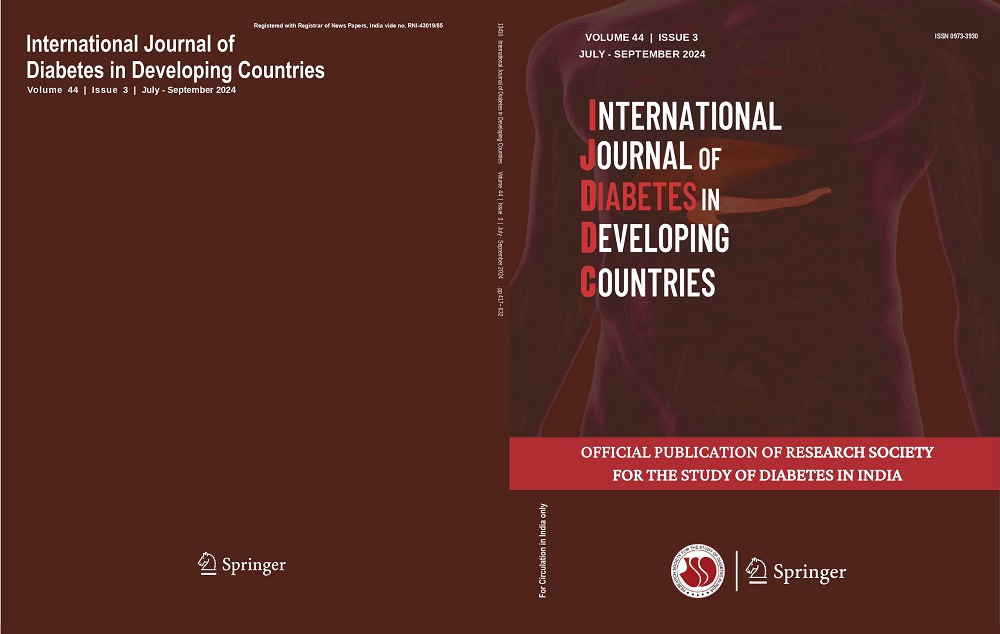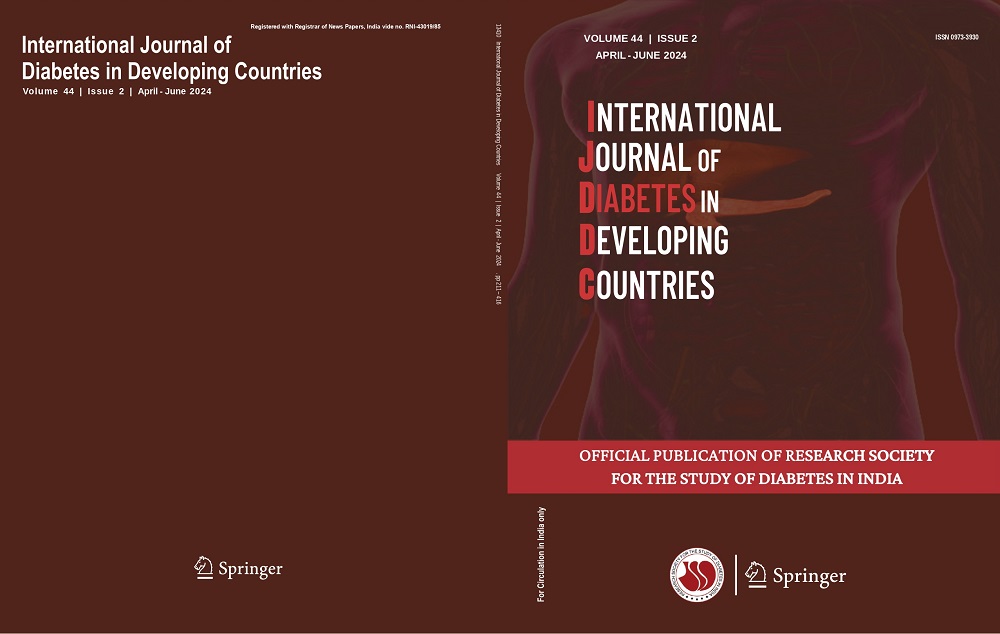Soham Mukherjee, Rimesh Pal, Sanjay Kumar Bhadada, Amanpreet Kaur, Ashu Rastogi
Keywords
Type 1 diabetes • Bone mineral density • Body mass index • Albumin
Abstract
Background The incidence of type 1 diabetes (T1D) is showing a rising trend all over the world, and these patients are living longer than before. With increasing longevity, they are at increased risk of chronic complications including fractures. However, the bone mineral density (BMD) data in T1D patients are conflicting and variable across the studies. Here, we aimed to study the BMD in adult patients with T1D and delineate its predictors.
Material and methods We recruited 40 T1D patients and equal number of age- and sex-matched control subjects. Clinical, biochemical, hormonal, and densitometric assessments were performed for each of the participants and compared between the two groups.
Results The median age of T1D and control subjects was 23.5 (21–27.75) years and 24 (22–26) years, respectively. The median duration of diabetes in T1D patients was 12.5 (9–15.75) years with a mean HbA1C of 8.7 ± 1.9%. The serum corrected calcium, phosphorous, alkaline phosphatase, creatinine, and plasma 25-hydroxyvitamin D and iPTH levels were comparable between the groups. In T1D subjects, the mean lumbar spine and left hip BMD were 0.876 ± 0.154 gm/cm 2 and 0.780 ± 0.112 gm/cm 2 , respectively, which corresponded to mean Z-scores of -1.5 ± 1.4 and -1.4 ± 0.9, respectively, which were significantly lower compared to control group. Multiple linear regression analyses showed that BMI and serum albumin were significant determinant of lumbar spine and hip BMD, respectively, in patients with T1D.
Conclusion Patients of T1D have apparently reduced BMD, which is being influenced by BMI and serum albumin level.




